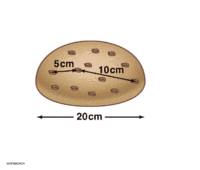
Photo from wikipedia
We show how the distances to binary black holes measured in gravitational wave observations with ground-based interferometers can be used to constrain the redshift-distance relation after incorporating selection effects, and,… Click to show full abstract
We show how the distances to binary black holes measured in gravitational wave observations with ground-based interferometers can be used to constrain the redshift-distance relation after incorporating selection effects, and, thereby, measure the Hubble constant ($H_0$). Gravitational wave observations of stellar-mass binary black holes are not expected to be accompanied by any electro-magnetic event that may help in accessing their redshifts. We address this deficiency by using the Sloan digital sky survey catalog to get the distribution of galaxies in redshift. Assuming that the clustering of the binaries is correlated with that of the galaxies, we propose using that correlation to measure $H_0$. We find that second-generation networks comprising at least three detectors, e.g., advanced LIGO - advanced VIRGO network, can measure $H_0$ with an accuracy of $\sim$ 10% with detection of a reference population of 25 binaries, each with black holes of mass 10$M_\odot$, distributed up to a redshift of 0.4. As expected, third-generation detectors like the Einstein telescope (ET), which will measure distances much more accurately and to greater depths, provide better estimates for $H_0$. Specifically, we show that with as few as 10 observations, ET can constrain $H_0$ to an accuracy of $\sim$7%. This method can also be used to estimate other cosmological parameters like the matter density $\Omega_m$ and the dark energy equation of state.
Journal Title: Physical Review D
Year Published: 2018
Link to full text (if available)
Share on Social Media: Sign Up to like & get
recommendations!